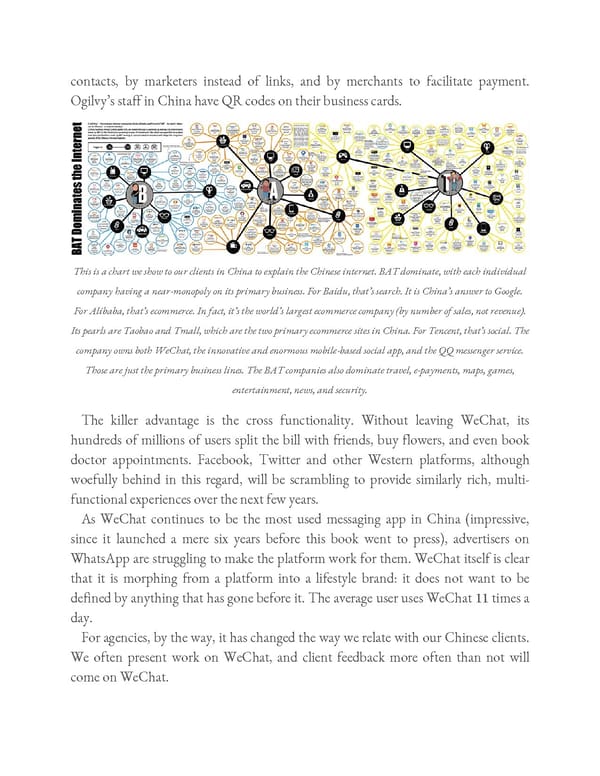contacts, by marketers instead of links, and by merchants to facilitate payment. Ogilvy’s staff in China have QR codes on their business cards. This is a chart we show to our clients in China to explain the Chinese internet. BAT dominate, with each individual company having a near-monopoly on its primary business. For Baidu, that’s search. It is China’s answer to Google. For Alibaba, that’s ecommerce. In fact, it’s the world’s largest ecommerce company (by number of sales, not revenue). Its pearls are Taobao and Tmall, which are the two primary ecommerce sites in China. For Tencent, that’s social. The company owns both WeChat, the innovative and enormous mobile-based social app, and the QQ messenger service. Those are just the primary business lines. The BAT companies also dominate travel, e-payments, maps, games, entertainment, news, and security. The killer advantage is the cross functionality. Without leaving WeChat, its hundreds of millions of users split the bill with friends, buy flowers, and even book doctor appointments. Facebook, Twitter and other Western platforms, although woefully behind in this regard, will be scrambling to provide similarly rich, multi- functional experiences over the next few years. As WeChat continues to be the most used messaging app in China (impressive, since it launched a mere six years before this book went to press), advertisers on WhatsApp are struggling to make the platform work for them. WeChat itself is clear that it is morphing from a platform into a lifestyle brand: it does not want to be defined by anything that has gone before it. The average user uses WeChat 11 times a day. For agencies, by the way, it has changed the way we relate with our Chinese clients. We often present work on WeChat, and client feedback more often than not will come on WeChat.
 Ogilvy on Advertising in the Digital Age Page 443 Page 445
Ogilvy on Advertising in the Digital Age Page 443 Page 445